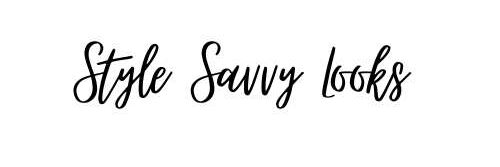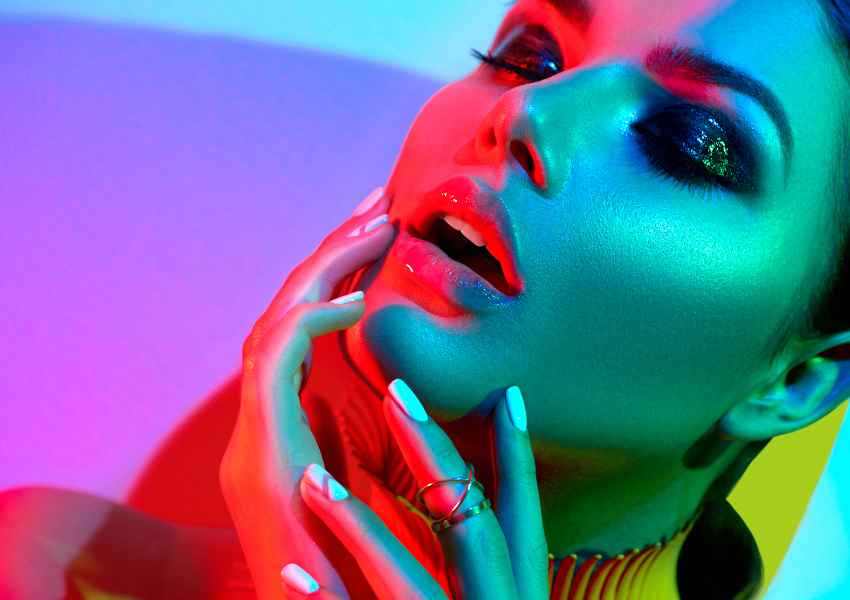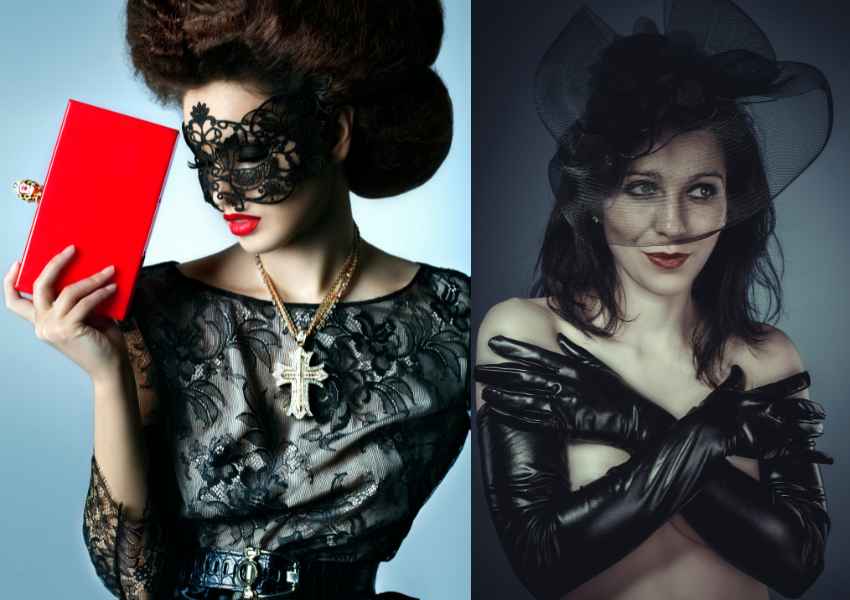Music and fashion, two seemingly distinct realms, share a fascinating and intricate relationship that has been evolving throughout history. While one may initially think of music as a form of auditory expression and fashion as a visual statement, the truth is that these two worlds are inextricably linked. This blog post aims to delve into the dynamic relationship between music and fashion, unraveling the ways in which melodies and style have influenced each other across various eras and genres.
Thesis Statement: Exploring the Dynamic Relationship
At first glance, the connection between music and fashion might not be immediately apparent, but a closer examination reveals a symbiotic relationship that has shaped cultural landscapes for centuries. This exploration will take us on a journey through time, dissecting the influence of different musical genres on fashion trends and vice versa. From the roaring Jazz Age to the rebellious spirit of punk rock, and from the glamour of pop to the grit of hip-hop, we will unravel the threads that bind music and fashion together, creating a rich tapestry that reflects the evolution of our societies and personal identities.
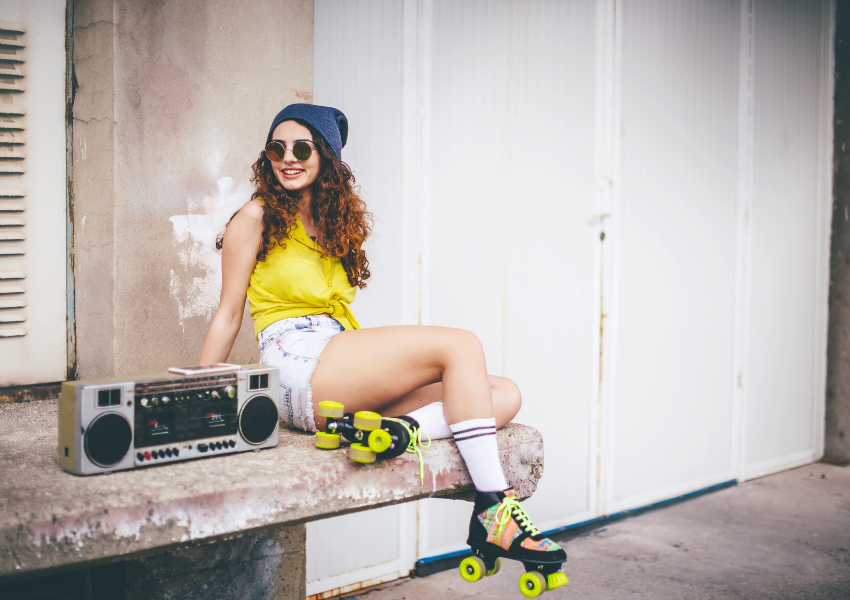
Section 1: Historical Context
In order to understand the intricate dance between music and fashion, it’s crucial to explore the roots of this relationship. The historical context provides us with a lens through which we can witness the early influences that set the stage for the fusion of these two art forms.
Early Influences
1. 1920s Jazz Age: Flappers and Dapper Suits
The roaring 1920s, known as the Jazz Age, brought forth a revolutionary cultural shift. Jazz music, with its lively rhythms and syncopated beats, gave rise to a new generation of free-spirited individuals known as flappers. Embracing the carefree and rebellious spirit of jazz, flappers defied societal norms with their short dresses, bobbed hair, and bold makeup. Simultaneously, dapper suits became a symbol of sophistication for men, reflecting the elegance of the jazz era.
2. 1950s Rock ‘n’ Roll: Leather Jackets, Jeans, and the Birth of Teenage Fashion
Fast forward to the 1950s, and the advent of rock ‘n’ roll not only transformed the musical landscape but also left an indelible mark on fashion. The rebellious energy of artists like Elvis Presley and Chuck Berry was mirrored in the attire of their teenage fans. Leather jackets and blue jeans became synonymous with the burgeoning rock ‘n’ roll culture, symbolizing a break from traditional norms. This marked the birth of teenage fashion, characterized by its distinctively casual and youthful style.
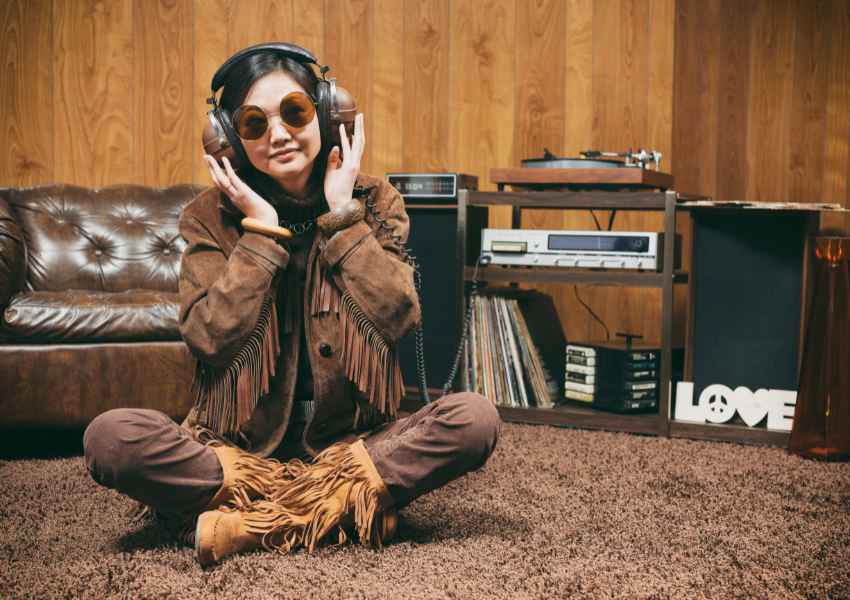
The 1960s and 1970s
As we step into the tumultuous yet vibrant decades of the 1960s and 1970s, we witness the emergence of iconic musical movements that significantly impacted fashion.
1. The Beatles and Mod Fashion
The Beatles, with their global phenomenon, not only revolutionized music but also influenced fashion trends. Mod fashion, characterized by sharp tailoring, bold patterns, and a minimalist aesthetic, became synonymous with the band’s image. The sleek and sophisticated Mod look represented a departure from the extravagance of previous decades and mirrored the band’s own evolution in sound and style.
2. Hippie Movement: Tie-Dye, Bell-Bottoms, and Peace Symbols
Meanwhile, the countercultural hippie movement was blossoming. In an era marked by a quest for peace and self-expression, tie-dye clothing, bell-bottom pants, and peace symbols became iconic symbols of this subculture. Hippie fashion was a direct reflection of the values and ideals of the movement, emphasizing a connection with nature, individuality, and a rejection of mainstream conventions.
3. Punk Rock: Safety Pins, Leather, and the DIY Ethic
The late 1970s saw the rise of punk rock, a genre that not only challenged the musical status quo but also disrupted fashion norms. Punk fashion was characterized by its rebellious and do-it-yourself (DIY) ethos. Safety pins adorned clothing, leather jackets became a staple, and torn, chaotic aesthetics conveyed a sense of anti-establishment. Punk rock’s influence on fashion was not just about attire; it was a visual representation of a subversive attitude and a rejection of mainstream norms.
Historical Context
Continuing our journey through the intertwined realms of music and fashion, we arrive at the dynamic and expressive decades of the 1980s and 1990s, witnessing the emergence of distinctive styles and subcultures.
The 1980s and 1990s
The 1980s and 1990s were characterized by a rich tapestry of musical genres, each leaving an unmistakable mark on the fashion landscape.
1. Hip-Hop Culture: Oversized Clothing, Sports Brands, and Bling
Hip-hop, born in the streets of New York City, not only revolutionized the music scene but also became a powerful influence in the world of fashion. The hip-hop culture of the 1980s was synonymous with oversized clothing, bold logos of sports brands, and extravagant jewelry, commonly known as “bling.” Rappers like Run-DMC and LL Cool J became style icons, and their urban fashion choices became a global phenomenon. The hip-hop fashion movement transcended music; it became a cultural expression and a reflection of urban identity.
2. Grunge Movement: Flannel Shirts, Ripped Jeans
Contrasting the glitz of hip-hop culture, the grunge movement emerged in the Pacific Northwest during the early 1990s. Spearheaded by bands like Nirvana and Pearl Jam, grunge music and fashion rejected the polished aesthetics of mainstream culture. Grunge fashion was characterized by its laid-back and anti-establishment vibe, featuring flannel shirts, ripped jeans, and a general disheveled appearance. This raw and unpretentious style became a symbol of the grunge movement’s authenticity and disdain for the commercialized aspects of the music and fashion industries.
3. Pop and Glam Rock: Bold Colors, Theatrical Outfits
Simultaneously, the 1980s saw the rise of pop and glam rock, where extravagant visuals and theatrical performances became as important as the music itself. Artists like Michael Jackson, Prince, and Madonna not only dominated the music charts but also set trends in fashion. Bold colors, dramatic hairstyles, and flamboyant, sometimes gender-bending outfits became the norm. The line between music and fashion blurred as artists used their style as a means of artistic expression, breaking free from traditional norms and embracing a more avant-garde approach.
The 2000s to the Present
As we move into the 21st century, the influence of music on fashion continues to evolve, shaped by pop icons, collaborative efforts, and the diversity of indie and alternative styles.
1. The Influence of Pop Icons Like Lady Gaga and Beyoncé
The 2000s witnessed the rise of pop icons who not only conquered the music charts but also became trendsetters in the fashion world. Lady Gaga, with her avant-garde and boundary-pushing outfits, redefined the possibilities of pop fashion. Beyoncé, known for her elegance and versatility, seamlessly integrates fashion into her performances. These pop icons not only inspire fans but also challenge conventional beauty standards, encouraging individuality and self-expression through clothing.
2. Hip-Hop and High-Fashion Collaborations
In the contemporary era, the collaboration between hip-hop and high fashion has reached new heights. Rappers like Kanye West and Travis Scott have transcended music to become influential figures in the fashion industry. High-end fashion brands now collaborate with hip-hop artists, leading to limited-edition releases and a fusion of streetwear with luxury. This collaboration not only shapes trends but also breaks down barriers between music and high fashion.
3. Indie and Alternative Styles
The 2000s to the present have also witnessed the rise of indie and alternative styles, driven by a desire for authenticity and uniqueness. Indie artists often embody a more DIY ethos, with a focus on individual expression. This movement has influenced a resurgence of vintage and thrifted fashion, emphasizing sustainable and eclectic choices. As music festivals and indie scenes gain prominence, they contribute significantly to the diversification of contemporary fashion.

Genre-Specific Influences
The relationship between music and fashion becomes even more pronounced when we focus on specific genres. Each genre has its own distinct fashion sense, contributing uniquely to the global fashion scene. Let’s explore how rock, metal, hip-hop, and rap have individually shaped and been shaped by fashion.
Rock and metal
Rock and metal music have had a profound impact on fashion, with several iconic elements now synonymous with these genres.
1. Leather jackets, band T-shirts, and studded accessories
One of the most enduring fashion items associated with rock and metal is the leather jacket. A symbol of rebellion and non-conformity, it has been a staple in the wardrobe of rock enthusiasts since the genre’s inception. Band t-shirts are another key element, allowing fans to visibly support and connect with their favorite artists. Studded accessories, including belts, bracelets, and chokers, add an edgy and rebellious touch, reflecting the raw energy of rock and metal music.
2. Sub-Genre Variations: Metal, Punk, Goth
Each sub-genre within rock and metal has developed its own unique fashion style. Metal often incorporates darker themes and colors, with band logos and imagery reflecting the intensity of the music. Punk fashion, as previously discussed, revolves around a DIY ethos with an edgier, more rebellious aesthetic. Goth fashion, influenced by gothic rock, is characterized by dark clothing, Victorian-inspired lace and velvet, and an overall mysterious and romantic vibe. These variations highlight how sub-genres not only differ musically but also in their fashion statements.
Hip-hop and rap
The fashion of hip-hop and rap is as vibrant and dynamic as the music itself, influencing mainstream fashion in numerous ways.
1. Streetwear’s Evolution
Streetwear, a style deeply rooted in hip-hop culture, has undergone significant evolution over the years. What started as a mix of comfortable, oversized clothing and athletic wear has now become a major fashion trend. Hoodies, track pants, and bomber jackets, once primarily functional attire, are now fashionable staples seen on runways and in high-street stores. The adaptability and accessibility of streetwear have made it a global phenomenon, transcending its musical origins.
2. Designer Labels and Luxury Fashion
Hip-hop and rap have also played a crucial role in bridging streetwear with high fashion. Designer labels and luxury brands, once distant from the urban culture of hip-hop, are now actively engaging with it. Rappers and hip-hop artists frequently reference and wear high-end brands, influencing their fan base and altering perceptions of luxury fashion. This convergence has led to collaborations between hip-hop artists and luxury fashion houses, further solidifying the genre’s impact on the fashion industry.
3. The Sneaker Culture
An integral part of hip-hop fashion is the sneaker culture. Sneakers have transitioned from mere athletic wear to fashion statements and collectibles, largely due to their prominence in hip-hop. Limited-edition releases, collaborations between artists and sneaker brands, and songs referencing popular sneaker models have all contributed to the rise of sneaker culture. Sneakers symbolize a blend of comfort, style, and personal expression, embodying the essence of hip-hop fashion.
Genre-Specific Influences
Continuing our exploration of how different music genres influence fashion, we turn our attention to the vibrant worlds of electronic and dance music, as well as the rustic charm of country and folk. Each of these genres has a unique aesthetic that has significantly influenced fashion trends.
Electronic and dance music
The world of electronic and dance music, with its high energy and colorful ambiance, has carved out a unique space in the fashion industry.
1. Rave Culture: Neon Colors, Light-Up Accessories
Rave culture, a significant part of the electronic and dance music scene, is renowned for its distinctive and flamboyant fashion. Neon colors dominate this style, reflecting the vibrant and energetic nature of the music. These bright hues are often complemented by light-up accessories like glow sticks, LED gloves, and illuminated jewelry, enhancing the immersive experience of rave parties. This fashion style is all about standing out and embracing a sense of fun and freedom.
2. Festival Fashion Trends
Electronic and dance music festivals have become not just musical events but also fashion showcases. Festival fashion is characterized by a mix of bohemian, edgy, and futuristic elements. Crop tops, holographic clothing, and funky sunglasses are common sights. These festivals encourage individuality and creativity, leading to diverse and innovative fashion choices that often set trends beyond the festival grounds.
Country and Folk
The fashion associated with country and folk music evokes a sense of nostalgia and simplicity, celebrating rural and rustic aesthetics.
1. Cowboy Boots, Denim, and the Rustic Aesthetic
Country and folk music have long been associated with classic American western wear. Cowboy boots, an emblem of this genre, combine both function and fashion. Denim, in the form of jeans, jackets, and shirts, is another staple of country and folk fashion, symbolizing durability and a down-to-earth lifestyle. The rustic aesthetic of this genre is complemented by plaid patterns, leather belts, and hats, reflecting the music’s roots in rural traditions and storytelling.
2. The Revival of Vintage and Handmade Items
In recent years, there has been a revival of interest in vintage and handmade fashion items within the country and folk scenes. This trend aligns with the genre’s emphasis on authenticity and craftsmanship. Vintage clothing, artisanal accessories, and handmade boots showcase a preference for quality and uniqueness, resonating with the music’s emphasis on storytelling and tradition. This revival not only supports sustainable fashion practices but also connects fans with the historical roots of country and folk music.
Fashion Icons and Their Impact
In the world of music and fashion, certain artists have not only influenced trends but have become bona fide fashion icons, while collaborations and endorsements have further blurred the lines between these two vibrant industries.
Artists as Fashion Icons
Musicians often become trendsetters, influencing fashion through their personal style and public personas.
1. David Bowie, Madonna, and Prince: Reinventing Personal Style
David Bowie, Madonna, and Prince are legendary not just for their musical genius but also for their groundbreaking fashion styles. David Bowie, with his Ziggy Stardust persona, brought avant-garde and androgynous styles to the forefront. Madonna’s ever-evolving fashion, from her iconic ’80s looks to her more sophisticated later styles, has had a lasting impact on women’s fashion. Prince, known for his flamboyant and unique sense of style, pushed the boundaries of masculinity in fashion with his high heels, ruffled shirts, and bold colors. Each of these artists used fashion as an extension of their creative expression, constantly reinventing their personal style and influencing fashion trends.
2. Kurt Cobain and the Anti-Fashion Statement
Kurt Cobain, the frontman of Nirvana, became an unintentional fashion icon with his grunge aesthetic. His anti-fashion statement, characterized by flannel shirts, ripped jeans, and disheveled looks, was a stark contrast to the polished images of pop stars. Cobain’s style was seen as a rejection of mainstream fashion norms, making grunge fashion a symbol of youth rebellion in the early ’90s.
3. Rihanna and Kanye West: From Music to Fashion Designers
Rihanna and Kanye West have successfully transitioned from being music icons to influential figures in the fashion industry. Rihanna’s Fenty brand is known for its inclusivity and innovative designs, while Kanye West’s Yeezy brand has been hugely influential in streetwear, particularly with its sneaker designs. Their success demonstrates how musicians can leverage their artistic vision and fan base to make a significant impact in the fashion world.
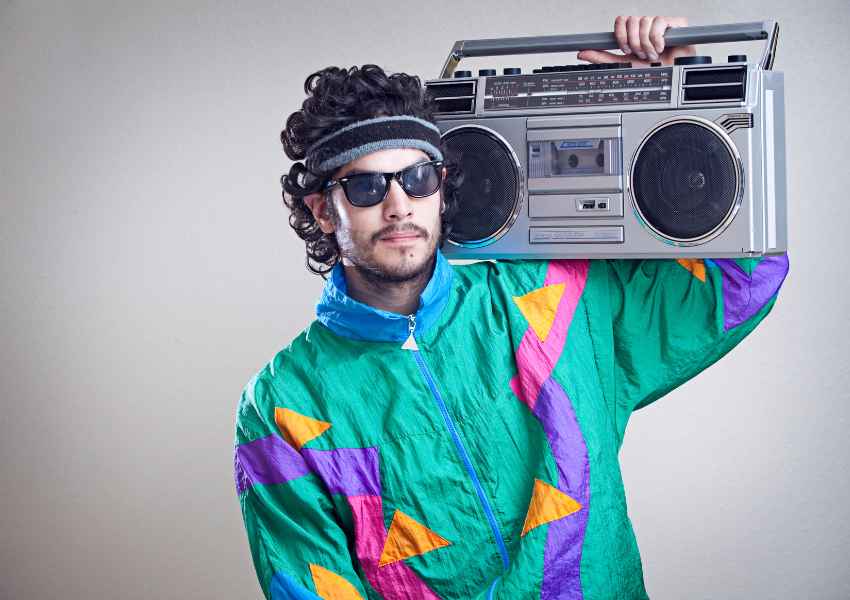
Collaborations and endorsements
The partnership between musicians and fashion brands often leads to innovative and trend-setting results.
1. Examples of Successful Collaborations Between Musicians and Fashion Brands
Several collaborations between musicians and fashion brands have made a significant impact. For instance, the collaboration between Adidas and Kanye West for Yeezy sneakers has been highly successful. Similarly, Rihanna’s partnership with Puma led to the popular Fenty x Puma line. These collaborations are not just business ventures; they are a fusion of creative minds that bring fresh and unique styles to the market.
2. The Impact of Celebrity Endorsements on Fashion Trends
Celebrity endorsements by musicians can dramatically influence fashion trends. When a music star wears a certain brand or style, it often becomes a sought-after trend among their fans and beyond. For example, when a celebrity is seen wearing a specific sneaker brand or style, it can lead to an increase in sales and popularity of that product. These endorsements are powerful because fans often look up to musicians for style inspiration, making musicians key influencers in the fashion industry.
Cultural and social impacts
The intersection of music and fashion goes beyond aesthetics, playing a significant role in cultural and social dynamics. This section explores how music videos influence fashion trends, the formation of fashion subcultures around music genres, and the use of clothing as a medium for political and social statements.
Music videos and fashion
Music videos have been pivotal in shaping and promoting fashion trends throughout the years.
1. The Role of Music Videos in Promoting Fashion Trends
Music videos are powerful tools for musicians to express their style and influence their audience’s fashion choices. These videos showcase not only the artist’s music but also their fashion sense, often introducing new trends and styles. The visual element adds an impactful dimension to the music, making fashion an integral part of the artist’s brand and identity.
2. Case Studies: MTV Era, YouTube, and Social Media Influences
During the MTV era, music videos became a cultural phenomenon, with artists like Madonna and Michael Jackson setting fashion trends that defined the 1980s and 90s. With the advent of YouTube and social media, the influence of music videos has only grown. Platforms like Instagram and TikTok have allowed artists to reach wider audiences, often leading to viral fashion trends. For example, the distinct styles of artists like Billie Eilish have become instantly recognizable and widely emulated among young fans.
Subcultures and Identity
Music genres often give rise to specific fashion subcultures, playing a crucial role in identity formation.
1. How Music Genres Foster Fashion Subcultures
Each music genre tends to develop its own unique fashion style, which fans adopt as a way of aligning themselves with the genre’s culture. For instance, the punk rock movement created a subculture that embraced a rebellious and DIY fashion style. Similarly, the hip-hop community developed a distinctive streetwear style that has significantly influenced mainstream fashion.
2. Fashion as a Form of Self-Expression and Group Identity
Fashion allows individuals to express their personalities and identify with a particular group or subculture. For many, wearing a specific style associated with their favorite music genre is a way to show their allegiance to that genre and connect with others who share similar tastes. It becomes a form of non-verbal communication that conveys one’s identity and values.
Political and social messages
Musicians often use clothing as a medium to convey social and political messages, making a statement through their fashion choices.
1. Clothing as a Medium for Social and Political Statements in Music
Many artists have used fashion as a tool to comment on social and political issues. For example, punk fashion was not just a style but a form of protest against societal norms and politics. Hip-hop artists have used their attire to address issues like racial inequality and police brutality.
2. Examples from Different Music Genres and Eras
Throughout different eras, music genres have used fashion to make political statements. In the 1960s, the hippie movement used clothing to express ideals of peace, love, and freedom, often opposing war and promoting environmental awareness. More recently, artists like Lady Gaga and Kendrick Lamar have used their fashion choices to make statements on issues ranging from LGBTQ+ rights to racial justice.
The business of music and fashion
The relationship between music and fashion extends into the realm of business, with both industries benefiting economically from each other. This section delves into the market interplay between music and fashion and examines the role of music in fashion branding and marketing strategies.
The Market Interplay
The economic relationship between the music and fashion industries is a dynamic and mutually beneficial one.
1. The Economic Relationship Between the Music and Fashion Industries
Music and fashion are intertwined industries that influence each other’s economic growth. Fashion trends often emerge from the music scene and become mainstream, driving sales in the fashion industry. Conversely, the fashion industry helps to shape the image of music artists, impacting their popularity and marketability. The collaboration between these two sectors creates a lucrative synergy, with each industry propelling the other forward.
2. How Music Tours, Festivals, and Merchandising Affect Fashion Retail
Music tours, festivals, and merchandising have a significant impact on fashion retail. Merchandise like band t-shirts, caps, and other accessories are not just souvenirs but also fashion statements that fans wear to express their musical tastes. Music festivals, in particular, have become a hotspot for fashion trends, with attendees often dressing up in unique and stylish outfits that often set new fashion trends. This phenomenon has led to fashion retailers collaborating with music festivals and artists to create exclusive clothing lines, further blending the worlds of music and fashion.
Branding and marketing strategies
Music plays a critical role in the branding and marketing strategies within the fashion industry.
1. The Role of Music in Fashion Advertising and Branding
Music is a powerful tool in fashion advertising and branding, helping to create an emotional connection with the audience. It can set the tone for a campaign, reinforce the brand’s image, and make advertisements more memorable. Fashion brands often use popular music tracks in their commercials to appeal to their target audience or collaborate with musicians to embody the brand’s identity and values.
2. Case Studies of Successful Music-Fashion Marketing Campaigns
Several music-fashion marketing campaigns have been notably successful. For instance, H&M’s collaboration with The Weeknd brought a fresh, edgy vibe to the brand, appealing to younger consumers. Another example is Gucci’s use of contemporary music mixed with a vintage aesthetic in its advertising campaigns, which resonates with both older and younger demographics. These case studies demonstrate how incorporating music into fashion marketing can enhance brand appeal and reach a wider audience.
The Future of Music and Fashion
As we look ahead, the fusion of music and fashion is poised to evolve in exciting ways, influenced by technological advancements, a growing focus on sustainability, and emerging trends. This section explores the potential future directions of this dynamic relationship.
Technological Advancements
The rapid advancement of technology is set to have a profound impact on how music and fashion intersect.
1. Digital and Virtual Fashion Trends Influenced by Music
The rise of digital and virtual fashion, especially in online spaces and video games, is creating new opportunities for music and fashion collaborations. Artists might release digital clothing lines for avatars in virtual worlds, influenced by their music styles or themes from their songs. Virtual concerts in games like Fortnite have already shown the potential for such integrations, with artists showcasing unique digital outfits during performances.
2. The Role of Social Media Platforms and Influencers
Social media platforms and influencers are crucial in shaping and spreading music-influenced fashion trends. Platforms like TikTok, Instagram, and YouTube allow for the quick dissemination of fashion trends inspired by musicians. Influencers and artists use these platforms to showcase their fashion, often leading to viral trends. The direct interaction between artists and fans on these platforms also allows for immediate feedback and adaptation of styles.
Sustainable and ethical fashion
Sustainability in fashion is becoming increasingly important, and the music industry is playing a role in this shift.
1. The Influence of Music Artists Promoting Sustainability
Many music artists are advocating for sustainable and ethical fashion, influencing their fans and the industry. Artists like Billie Eilish and Pharrell Williams, known for their commitment to environmental issues, have been vocal about choosing sustainable fashion options. Their influence is significant in promoting eco-friendly fashion choices among their fan base.
2. Shifts Towards Eco-Friendly Fashion in Music Circles
There is a growing trend in the music industry towards adopting eco-friendly fashion, both on and off the stage. This includes using sustainable materials for tour merchandise, choosing eco-conscious outfits for performances, and collaborating with sustainable fashion brands. As public figures, musicians have the power to make eco-friendly fashion more mainstream.
Emerging trends and predictions
The landscape of music and fashion integration is continuously evolving, with new trends on the horizon.
1. Upcoming Collaborations and Potential Genre Influences
Future collaborations between musicians and fashion brands are likely to become even more innovative and boundary-pushing. We can expect to see more cross-genre influences, where artists from different musical backgrounds inspire diverse fashion styles. These collaborations might also extend beyond traditional clothing to include digital fashion items for online and virtual environments.
2. The Evolving Landscape of Music and Fashion Integration
As we move forward, the integration of music and fashion will likely become more immersive and interactive. This could involve augmented reality (AR) experiences at concerts, where fans can virtually try on and purchase artist-inspired fashion, or even collaborations in virtual reality (VR) spaces. Additionally, the rise of AI in creating personalized fashion recommendations based on music preferences could be a significant trend.
Conclusion
As we’ve explored, the interconnection between music and fashion is not just a superficial trend but a deep and evolving relationship that has shaped cultural identities and societal norms over decades. From the flashy attire of the 1920s Jazz Age to the digital and virtual fashion trends of today, this relationship has continually reinvented itself, reflecting the ever-changing landscape of both industries.
Music and fashion have always been intertwined, with each industry continuously influencing and inspiring the other. Historical eras like the 1950s Rock ‘n’ Roll and the 1960s Hippie movement showcased how music could directly inspire fashion trends. Likewise, the rise of genres such as hip-hop, rock, and electronic music has seen corresponding fashion styles emerge and evolve. Icons from David Bowie to Rihanna have shown how artists can become fashion symbols, using their platform to push the boundaries of personal style and societal norms.
This relationship extends beyond mere aesthetics, playing a significant role in cultural and social movements. Fashion within music circles has been used to make political statements, create subcultural identities, and even drive economic markets. The rise of social media and technological advancements has further amplified this connection, bringing about new opportunities for expression and innovation in both fields.
